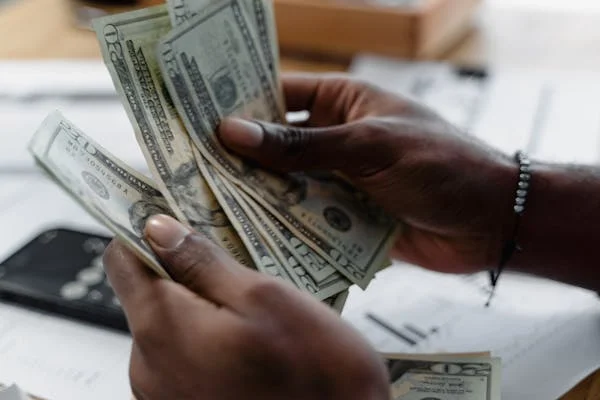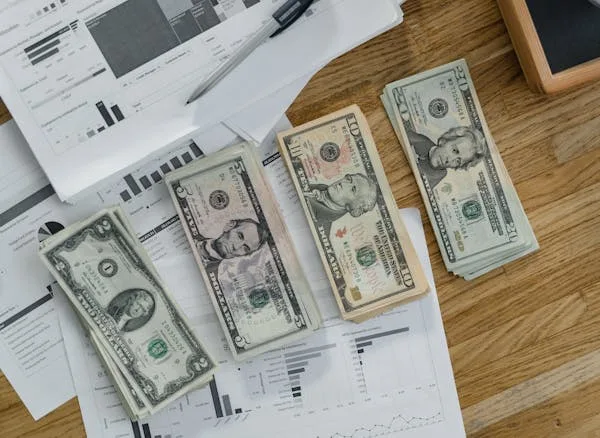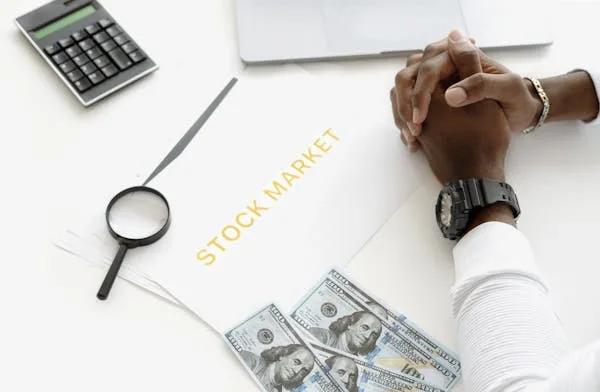Raising money at the seed stage can feel like a rollercoaster ride. Over the last five years, trends have shifted fast. If you are a founder, investor, or just curious about how early-stage funding is evolving, this report will walk you through the most important facts.
1. The median seed round size in 2020 was approximately $2.2 million
In 2020, the startup world faced major disruptions. Yet, seed investments continued growing, and the median round size reached about $2.2 million.
This number was a sign that investors were gaining more confidence in early-stage startups, even amid economic uncertainty. It also reflected how ambitious many startups had become, needing bigger checks to build solid products and teams.
What This Means for Founders
If you were raising in 2020, you probably felt the pressure to showcase a strong product-market fit earlier than before. A bigger average check size meant investors expected a lot more validation from founders at the seed stage.
When preparing for a seed round today, remember that $2.2 million in 2020 often demanded:
- A live product with early users
- Strong early customer feedback
- A clear and well-validated market opportunity
It’s no longer enough to have just an idea. You need traction, a clear use case, and visible growth indicators.
How to Position Yourself Now
Founders today must prepare even better than they did in 2020. Here’s what you can do:
- Build a strong MVP before talking to investors
- Get real users and testimonials early
- Show actual revenue, even if small
- Create a clear roadmap for scaling after the seed round
When you show that your company is already solving a painful problem and has eager customers, you give investors the confidence they need.
Seed rounds may seem like an early step, but they now demand a level of readiness that used to belong at Series A stages.
2. By 2021, the median seed round size grew to around $2.7 million
The shift from $2.2 million to $2.7 million between 2020 and 2021 was fast and significant.
Investors had even more liquidity, and valuations skyrocketed. Many venture firms that once avoided seed rounds now wanted a piece of the action. Startups took advantage by raising larger seed rounds earlier in their lifecycle.
Why This Jump Matters
Bigger checks changed the way startups operated right after their seed round. It allowed them to:
- Expand their teams faster
- Spend more on marketing and sales
- Improve their products rapidly
But it also increased expectations. Investors now wanted faster growth and shorter paths to the next round.
Actionable Advice for Today’s Founders
Here’s what you should keep in mind:
- Plan for scale right after your seed round closes
- Focus on hiring leaders who can take you from early-stage to growth-stage quickly
- Build an agile marketing and sales system that can test and adapt fast
More money is helpful, but it can also be dangerous if not handled carefully. Make sure you have a disciplined budget and a growth model before you raise a larger seed round.
3. In 2022, median seed rounds reached $3 million for the first time
Crossing the $3 million mark was a major psychological milestone in 2022.
It showed that the line between seed and Series A was blurring. Some startups that traditionally would have gone to Series A after raising $2–$3 million were now expected to hit those metrics with just seed funding.
What This Tells You About the Market
Seed investors were betting bigger but also being pickier. They wanted to see:
- Faster customer acquisition
- Stronger retention metrics
- Early revenue growth
If you raised $3 million or more at seed, you were expected to behave like a mature startup from day one.
What You Should Do
Focus on these areas:
- Build deep customer engagement from the start
- Choose marketing channels that scale affordably
- Think like a growth-stage company even if you are early-stage
Raising $3 million should not mean burning cash without direction. Instead, it’s about building a lean but aggressive machine that can outpace the competition.
4. In 2023, the median seed round size slightly contracted to $2.8 million
The contraction to $2.8 million in 2023 was the first sign that the market was cooling.
Economic headwinds, rising interest rates, and uncertainty in the tech world caused investors to become more cautious. Startups still raised big seed rounds, but not as easily as before.
What Changed
Investors began asking tougher questions. They focused more on:
- Sustainable business models
- Clear paths to profitability
- Strong unit economics
It was no longer enough to promise hockey-stick growth. You had to show that growth would not come at the cost of endless losses.
Winning in a Tougher Market
Here’s how you can navigate this shift:
- Know your customer acquisition costs and lifetime value inside out
- Be ready to show a path to profitability at scale
- Trim the fat early—investors want lean and mean startups now
Surviving and thriving in a slightly tighter funding environment forces you to build a better business from the beginning.
5. 2024 saw a median seed round size of $2.9 million
In 2024, the seed round median edged up slightly to $2.9 million. This small but meaningful increase suggested that while the market was cautious, it remained strong and optimistic about early-stage companies.
The rise reflected a balancing act between founders asking for reasonable capital and investors still willing to support bold visions, as long as they were backed by real results.
Why This Matters for Founders Today
In a market where funding is stabilizing, raising around $2.9 million signals to investors that you have a solid foundation but also a realistic view of your needs. Overreaching can scare investors away. Asking for too little might leave you struggling later.
A $2.9 million seed round typically funds:
- Building out a minimum viable product into a robust version
- Expanding an early team to 10–20 people
- Finding a scalable acquisition channel
- Achieving early revenue or product-market fit
When raising today, founders must be sharp about how much they need and exactly how they will use it.
Practical Steps You Should Take
Here’s how to prepare if you are planning a seed round now:
- Break down exactly how much you need by category (team, product, marketing, operations)
- Have a clear 18–24 month runway planned out
- Build a use-of-funds slide that shows investors you are disciplined
This approach reassures investors that you are thoughtful and strategic, not just chasing a big number. It puts you in a stronger position during negotiations and makes your startup more attractive.
6. The average seed round valuation cap in 2021 was approximately $10 million
By 2021, the average valuation cap on seed rounds climbed to about $10 million.
This reflected how competitive the environment had become. Founders could demand higher valuations, and investors agreed if the opportunity seemed promising enough.
Valuation caps often appeared in SAFE notes and convertible notes, protecting investors while still offering founders flexibility.
What This Means for You
A $10 million valuation cap set the bar higher for early-stage startups. Investors wanted to see early signs of big outcomes to justify it.
You could no longer rely just on a great idea. You had to prove that your startup had the potential to be worth hundreds of millions.
The expectation included:
- A strong founding team with domain expertise
- Evidence of large market demand
- Early signs of product-market fit
Actionable Tips for Setting Your Valuation Cap
When you think about your valuation cap today, focus on these principles:
- Set a cap that reflects where you are, not just where you hope to be
- Support your cap with clear metrics (users, revenue, engagement)
- Be prepared to explain why your company deserves it compared to others
If you price too high without evidence, you risk scaring investors off or creating problems for your next round. A fair, well-supported valuation makes everything smoother, from negotiations to future fundraising.
7. In 2022, the average seed valuation cap rose to around $12 million
The trend didn’t stop. By 2022, the average seed round valuation cap climbed to $12 million.
Startups could command these numbers because there was still huge demand for early equity stakes, especially in emerging industries like AI, Web3, and digital health.
However, this also meant that competition among startups was fiercer. It wasn’t enough to just raise money. You had to meet expectations quickly or risk fading out.
What Founders Need to Know
If you raised at a $12 million cap in 2022, the market assumed you would reach a Series A valuation of $30–$50 million soon after. That required significant milestones, fast.
Investors also started scrutinizing whether startups could sustain growth beyond just a few good months.
How to Navigate High Caps
If you are raising today with a higher cap, keep these strategies in mind:
- Set quarterly goals and measure yourself rigorously
- Build momentum, not just metrics (press, partnerships, customer wins)
- Prepare your next round pitch even before you close your seed round
High valuation caps can work well if you execute strongly, but they leave little room for slow progress. Keep the pressure on internally and externally from day one.
8. 2019 had a median seed round size of $1.7 million
Before all the boom years, 2019 was a very different landscape. The median seed round size was about $1.7 million.
It was a more cautious time for seed investors. Startups raised smaller rounds and typically needed to do more with less.
Why This Benchmark Still Matters
Looking back at 2019 helps founders appreciate how quickly expectations and strategies have changed.
In 2019, founders focused heavily on:
- Building sustainable businesses early
- Achieving profitability faster
- Being extremely scrappy with resources
Many of today’s successful startups raised small seed rounds back then and still built world-changing companies.
Lessons You Should Apply
Even though funding amounts have increased, the 2019 mentality still wins today.
Here’s what you should learn from it:
- Operate with discipline, no matter how much you raise
- Focus on making each dollar go further
- Make early hires carefully and deliberately
If you can combine today’s bigger funding opportunities with the 2019 discipline mindset, you build an unbeatable foundation.
9. 2020 to 2022 marked a 35% increase in median seed round size
During just two years, the median seed round size jumped by about 35%.
This rapid growth reflected an explosion of interest in startups. Venture capital firms were flush with cash. Angels were investing more than ever. Even family offices and hedge funds started participating in seed rounds.
What This Wave Meant
It was an era of “easy money,” but also of high competition. If you were a founder in 2020–2022, you might have had more options for funding but also more pressure to move fast.
Startups that raised big seed rounds during this time often scaled quickly — or burned out just as quickly if they couldn’t match growth expectations.
Winning After a Big Raise
If you raise a large seed round today, apply these steps:
- Over-communicate milestones to investors to keep confidence high
- Stay ahead of your hiring needs—don’t let gaps slow you down
- Keep your customer acquisition costs tightly monitored
Money can create momentum, but only if you manage it well. Always run slightly leaner than you think you can afford to. This builds operational strength that investors notice.
10. The number of seed deals larger than $5 million doubled between 2019 and 2022
One of the clearest signals of change was how common large seed rounds became.
Between 2019 and 2022, the number of seed deals worth more than $5 million doubled.
Startups that used to raise $1–2 million were now raising $5–10 million — sometimes without even a fully built product.
Why This Happened
Investors were chasing the next unicorn earlier and earlier. Rather than wait for Series A, many firms started offering huge checks at seed.
This helped startups scale faster but also raised the stakes for early-stage execution.
How Founders Should Think About Big Seed Rounds
If you are considering raising $5 million or more at seed today, keep this in mind:
- You need to move very fast to Series A metrics (often within 12–18 months)
- Investors will expect strong board reporting, even at seed stage
- Your hiring needs will expand quickly, including mid-level managers
A $5 million seed round is no longer just about finding product-market fit. It is about building the foundation for a company that can raise $20–$50 million soon after.
Structure your company from day one with this growth path in mind, or risk struggling later under the weight of high expectations.
11. Mega seed rounds ($10M+) became 4x more common between 2018 and 2023
Mega seed rounds, those above $10 million, were once extremely rare. However, between 2018 and 2023, they became four times more common.
Startups began raising amounts that looked more like Series A or even Series B rounds from just a few years earlier. This signaled a major shift in how investors thought about risk and reward at the seed stage.

Understanding the Rise of Mega Seed Rounds
There were a few big reasons behind this surge:
- Increased venture fund sizes meant firms needed to deploy larger checks.
- Sectors like fintech, biotech, and AI demanded more upfront capital.
- More mature founding teams, often second- or third-time founders, raised bigger rounds with stronger early metrics.
Mega rounds were often about speed. Founders who raised them were expected to dominate their market quickly or at least prove overwhelming momentum.
How to Approach a Mega Seed Round Today
If you are aiming for a large seed round:
- Build a compelling narrative about a massive, inevitable market shift.
- Show that you can attract top-tier talent quickly with sufficient funding.
- Provide a detailed execution plan that justifies the capital ask.
Investors writing $10M+ checks are betting that you will skip the “struggle phase” most early-stage companies go through. They expect you to behave like a Series A company immediately.
If you are not prepared to operate at that pace and scale, you might be better off raising a smaller, more manageable round first.
12. The average seed round size in Silicon Valley in 2022 was $4.1 million
In Silicon Valley, the heart of startup culture, the average seed round reached $4.1 million in 2022.
This was notably higher than the global average. Silicon Valley startups benefited from intense competition among investors, a rich ecosystem of accelerators and mentors, and a strong tradition of risk-taking.
What This Means for Founders Everywhere
If you are based outside Silicon Valley, it’s important to understand that benchmarks can vary by geography.
While $4.1 million was typical there, it might have been excessive or unnecessary elsewhere. Raising the right amount for your market is more important than matching numbers from different regions.
How to Tailor Your Fundraising Approach
Here’s what you should do if you are raising outside Silicon Valley:
- Understand the standard seed round sizes in your local ecosystem.
- Educate investors about why you need your requested amount.
- Focus on milestones you can hit with the money you raise, rather than just the size of the round.
Silicon Valley’s numbers are useful for perspective, but they should not dictate your entire fundraising strategy. Focus on building a great business that fits your environment.
13. Non-U.S. seed rounds averaged about $1.5 million in 2021
Outside the U.S., the average seed round in 2021 was around $1.5 million.
This reflected a more cautious funding environment in many parts of the world, as well as differences in startup costs.
Startups in regions like Europe, Latin America, Southeast Asia, and Africa could often achieve meaningful progress with less capital compared to their U.S. counterparts.
Key Takeaways for Global Founders
If you are building a startup outside the U.S.:
- Know that needing less money can actually be an advantage.
- Show how you can achieve major milestones with capital efficiency.
- Emphasize your ability to stretch dollars and operate lean.
Investors love founders who can do a lot with a little. It shows resourcefulness, discipline, and creativity—all traits that scale well over time.
You don’t need to match Silicon Valley check sizes to build a world-class startup. You need to maximize impact with every dollar raised.
14. Female-founded startups saw average seed rounds of $2.5 million in 2023
In 2023, female-founded startups raised an average of $2.5 million at the seed stage.
This was a positive sign of progress, but still slightly lower than the overall average. It reflected both increasing support for diverse founders and the ongoing gaps that still exist.
Why This Matters
Investors are recognizing that diversity leads to better outcomes. Studies show that diverse founding teams often outperform homogenous ones over time.
Female founders are increasingly building highly investable companies, and the fundraising gap is narrowing. However, there’s still work to be done to achieve full equality.
Strategies for Female Founders Raising Seed Rounds
If you are a female founder:
- Build strong early momentum before hitting the fundraising trail.
- Connect with investor networks and funds that specifically support diverse teams.
- Don’t undersell yourself—ask for what you need to win.
Confidently owning your business plan and ambition is critical. Investors want to back winners, and showing leadership from the first meeting sets the right tone.
15. SaaS companies had the highest median seed round size at $3.2 million in 2022
In 2022, Software-as-a-Service (SaaS) startups commanded the highest median seed round size at $3.2 million.
This reflected the enduring appeal of SaaS models: recurring revenue, scalability, and global reach. Investors loved SaaS because it offered predictable growth and often excellent margins.
Why SaaS Attracted Bigger Rounds
SaaS startups were raising more because:
- They showed early customer validation through monthly recurring revenue (MRR).
- The sales process and customer acquisition strategies were becoming more sophisticated.
- SaaS metrics like churn, lifetime value, and payback period gave investors better ways to assess risk early.
How to Build a Fundable SaaS Company Today
If you are building a SaaS startup, focus on these:
- Nail your early customer success process to reduce churn.
- Measure and optimize your CAC (customer acquisition cost) and LTV (lifetime value).
- Create a compelling narrative about market expansion and upsell potential.
When investors see a SaaS startup with growing, sticky revenue, they get very excited. Make sure you are tracking and presenting the right metrics from the very beginning.
16. Healthcare startups’ average seed rounds grew by 40% between 2020 and 2024
Healthcare startups saw their average seed round size jump by 40% between 2020 and 2024.
This growth was driven by a number of factors, including global health challenges, the rise of telemedicine, and an increasing interest in biotech and healthtech solutions. Investors realized that healthcare innovation was not only necessary but also highly profitable.
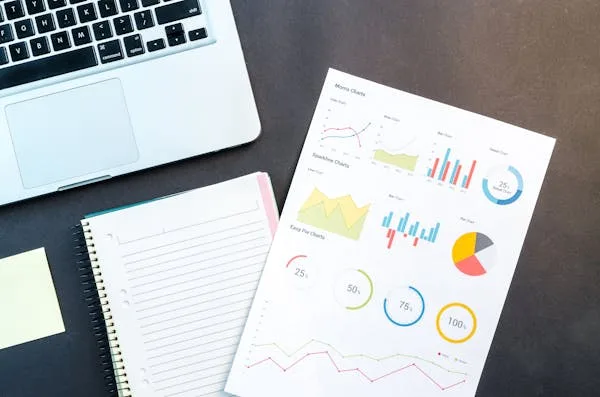
Why Healthcare Attracted Bigger Seed Rounds
Healthcare startups often need more capital early on because:
- Building and testing health-related products require regulatory approvals.
- Clinical trials and pilot programs add significant upfront costs.
- Market education is often needed to shift consumer or enterprise behaviors.
As a result, investors understood that healthcare companies could not operate on a shoestring budget the way some software companies might.
What You Should Focus on as a Healthcare Founder
If you are in healthcare or healthtech:
- Build a clear plan for regulatory strategy early.
- Partner with key industry players (hospitals, clinics, insurers) as soon as possible.
- Show traction through pilot programs, case studies, and clinical results.
Investors in healthcare want to see that you understand the long road ahead and have realistic, detailed plans for how to navigate it. Preparing thoroughly now can set you apart from competitors later.
17. Crypto and Web3 startups’ seed rounds peaked at $4.5 million in 2022
In 2022, Crypto and Web3 startups hit an all-time high with seed rounds averaging $4.5 million.
This was during the peak of mainstream excitement around decentralized finance (DeFi), non-fungible tokens (NFTs), and blockchain innovation. Investors poured money into early-stage crypto projects, hoping to catch the next major breakout.
The Nature of Crypto Seed Funding
Crypto startups often needed large seed rounds because:
- Building on blockchain infrastructure required deep technical teams.
- Launching products often involved both technology development and community growth.
- Marketing and ecosystem incentives (such as token airdrops) required significant upfront spending.
How Crypto Founders Should Think Today
The crypto market has cooled a bit, but valuable opportunities still exist. Here’s how you should approach seed fundraising today:
- Focus on real-world use cases and adoption rather than hype.
- Build strong tokenomics models if you are planning to launch a token.
- Create real traction through partnerships and active user bases.
Investors are more cautious now but still hungry for solid crypto bets. Demonstrating real product-market fit and compliance readiness can make your project highly fundable.
18. The percentage of seed rounds involving SAFE notes increased to 70% in 2023
By 2023, about 70% of seed rounds involved a SAFE note (Simple Agreement for Future Equity).
SAFE notes became incredibly popular because they made fundraising simpler, faster, and cheaper. Both founders and investors loved the straightforward, founder-friendly terms.
Why SAFE Notes Took Over
Founders liked SAFEs because:
- They avoided setting a fixed valuation immediately.
- They delayed complicated negotiations to later rounds.
- Legal fees were significantly lower.
Investors liked SAFEs because:
- They still gained early access to promising startups.
- They could often get valuation caps and discounts for their early risk.
How to Use SAFE Notes Wisely
If you are raising on a SAFE:
- Be clear about your cap and any discount you offer.
- Avoid stacking too many SAFEs with very different terms, which can cause trouble at Series A.
- Plan a clear timeline for when you will convert SAFEs into equity.
Using SAFEs properly helps you maintain momentum in your fundraising and avoid unnecessary complications down the road.
19. Median seed investor participation rose from 4 investors per round in 2019 to 6 in 2024
The number of investors participating in each seed round rose from 4 to 6 between 2019 and 2024.
This reflected a shift toward collaborative investing, where multiple firms or angels would pool resources to support a startup. It also showed that rounds were getting larger and required more hands to fill.

Why More Investors Are Joining Seed Rounds
- Startups are raising more money, needing more backers to fill out rounds.
- Investors like to share risk by joining syndicates.
- Founders often want a diverse cap table for broader support and networks.
How Founders Should Handle Multiple Investors
Managing six or more investors can be tricky. Here’s how to do it well:
- Set clear expectations for communication (e.g., quarterly updates).
- Group smaller investors into one voting bloc if possible.
- Stay organized with your cap table management early.
A well-managed group of investors can provide more introductions, advice, and support than a single lead. But it takes careful planning and communication to keep everyone aligned.
20. Median time between pre-seed and seed rounds decreased from 24 months in 2019 to 16 months in 2024
The time between raising a pre-seed round and a seed round has dropped dramatically — from 24 months in 2019 to just 16 months in 2024.
Founders are moving faster than ever before, and investors are pushing startups to reach key milestones quicker.
Why This Acceleration Matters
A faster timeline to seed forces founders to:
- Build MVPs faster
- Acquire early customers quickly
- Prove traction and product-market fit earlier than before
It also creates more pressure to make tough decisions faster, such as pivoting, doubling down, or scaling up.
How to Succeed in a Compressed Timeline
If you are at pre-seed now:
- Focus heavily on speed without sacrificing quality.
- Set clear 3-month and 6-month goals tied to traction milestones.
- Build relationships with seed investors even before you are ready to raise.
Time is now one of the biggest competitive advantages you can create. Speed and focus will make the difference between raising your seed round confidently and struggling to stay afloat.
21. Seed-stage valuations fell by 15% from Q1 2022 to Q2 2023
Between the first quarter of 2022 and the second quarter of 2023, seed-stage valuations fell by approximately 15%.
This marked the end of the high-valuation era that defined much of the previous two years. As economic conditions tightened, investors adjusted their expectations and became more disciplined in how they valued early-stage companies.
Why This Decline Happened
Several factors drove this trend:
- Rising interest rates made risk capital less available.
- Public tech stock corrections trickled down into the private markets.
- Investors became more focused on profitability and sustainable growth.
A 15% drop may not seem massive, but in startup valuations, it can have a big impact on fundraising dynamics, ownership dilution, and exit potential.
How Founders Should Adapt to Lower Valuations
If you are raising now or soon:
- Be realistic about your valuation expectations.
- Focus on metrics and milestones that justify every dollar you are asking for.
- Understand that a fair valuation today is better than chasing a high one and missing out.
Smart founders know that getting the right investors at the right terms is more important than squeezing out an inflated valuation that could cause problems at the next stage.
22. Over 55% of seed rounds in 2023 were led by micro-VCs
Micro-VCs, or venture firms with funds typically under $100 million, led more than 55% of seed rounds in 2023.
This showed how the landscape of seed investing was changing. Smaller firms with flexible check sizes and a focus on early-stage startups were gaining more influence.
Why Micro-VCs Are So Important
Micro-VCs often:
- Move faster than traditional venture funds.
- Are willing to take bigger risks on earlier teams and ideas.
- Offer more hands-on support during the critical first 12–24 months.
They play a vital role in helping startups find product-market fit and prepare for larger rounds later.
How to Approach Micro-VCs as a Founder
When targeting micro-VCs:
- Personalize your outreach and demonstrate a clear fit with their thesis.
- Emphasize your ability to move fast and show results quickly.
- Be ready to involve them actively in advice, networking, and recruiting.
Partnering with the right micro-VC can open doors to bigger firms later, and set you up for long-term success.
23. Median seed dilution was approximately 20% per round across 2019–2024
Across the past five years, the typical dilution for a seed round hovered around 20%.
This means that after a seed round, founders and early team members usually owned about 80% of the company, with investors holding around 20%.
Why Understanding Dilution Matters
Managing dilution is critical for long-term success. Too much early dilution can leave founders with little incentive or control by the time they reach later rounds.
Keeping dilution in check while still raising enough to hit key milestones is one of the trickiest parts of early-stage fundraising.

How to Manage Your Ownership Wisely
Here’s how to think about dilution strategically:
- Aim to raise enough capital to reach major value inflection points without giving away too much equity.
- Be transparent with early employees about your cap table and dilution plans.
- Always model multiple funding scenarios to understand future ownership.
Controlling dilution is about playing the long game. Protect your ownership early, and you will have more flexibility and power as you grow.
24. The average number of seed deals closed annually grew by 12% from 2020 to 2022
Between 2020 and 2022, the average number of seed deals closed annually grew by 12%.
Despite global uncertainty, venture capital activity at the seed stage remained strong and even grew during this time. This reflected a broad belief that innovation often thrives during periods of change.
What This Means for Founders
More seed deals mean more opportunities—but also more competition. Standing out became even more critical.
It wasn’t enough just to have a good idea. Founders needed to prove that they could build fast, adapt to change, and execute with discipline.
How to Stand Out in a Crowded Market
If you are preparing to raise a seed round now:
- Focus heavily on telling a unique and compelling story.
- Demonstrate early traction or user demand, even at a small scale.
- Highlight the strength of your founding team and why you are the ones to win.
More deals mean more chances to get funded, but also more noise. Clarity, authenticity, and real results help you break through the clutter.
25. In 2023, over 40% of seed rounds were $3 million or larger
By 2023, more than 40% of seed rounds were $3 million or larger.
This marked a major shift compared to just a few years earlier, when $1–$2 million seed rounds were much more common. It reflected both growing ambitions among founders and rising expectations among investors.
Why Seed Rounds Are Getting Bigger
- Startups are expected to show more traction before Series A.
- Competition for talent and customer attention is fierce, requiring bigger early budgets.
- Venture firms want startups to have enough runway to reach stronger metrics.
Bigger rounds give startups breathing room, but they also increase pressure to perform.
How to Prepare for a Larger Seed Round
If you are targeting a $3 million+ seed round:
- Build a detailed plan for how every dollar will be used.
- Show a clear path to major milestones within 18–24 months.
- Present a hiring plan that matches your growth and revenue targets.
Bigger rounds are powerful tools when used wisely. They allow you to grow faster and smarter—but only if you stay focused and disciplined from day one.
26. AI and ML startups raised average seed rounds of $3.5 million in 2024
Artificial Intelligence (AI) and Machine Learning (ML) startups saw average seed rounds rise to $3.5 million in 2024.
This jump reflects the growing belief that AI and ML technologies will define the future across almost every industry. Investors are eager to fund startups that can harness these technologies early and carve out leadership positions.
Why AI and ML Are Attracting Bigger Seed Rounds
- Building powerful AI products often requires deep technical expertise and expensive talent.
- Early-stage data acquisition and model training demand significant upfront investment.
- The potential market sizes are enormous, from healthcare to finance to logistics.
Startups in this space must demonstrate not only technical innovation but also clear paths to real-world applications and revenue.
How AI and ML Founders Can Succeed in Fundraising
If you are building an AI/ML startup today:
- Highlight how your models solve specific, high-value problems.
- Show differentiation in your technology and explain why it’s hard to replicate.
- Present early customer validation or pilot programs that demonstrate demand.
Investors are no longer impressed just by AI buzzwords. They want to see practical, scalable solutions. Startups that combine cutting-edge innovation with clear commercial applications are the ones winning larger seed rounds.
27. 60% of U.S. seed rounds in 2024 included at least one corporate venture arm
In 2024, around 60% of U.S. seed rounds had participation from at least one corporate venture capital (CVC) arm.
Corporate investors are playing a bigger role in early-stage funding than ever before. They bring not just money, but also strategic resources, partnerships, and potential acquisition paths.
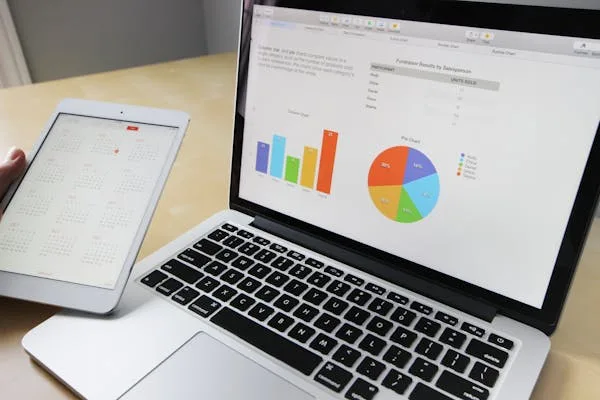
Why Corporates Are Investing Early
- They want early access to disruptive technologies that might complement or challenge their businesses.
- Partnering early gives them insights into emerging trends and talent.
- Investing early can sometimes lead to easier acquisition opportunities later.
How Founders Should Work with Corporate Investors
If you are considering taking money from a corporate venture arm:
- Understand their strategic interests and how they align (or don’t) with your goals.
- Clarify expectations around product integrations, exclusivity, or acquisition discussions.
- Maintain independence and flexibility for future fundraising rounds.
A smart partnership with a corporate investor can open doors. But founders should always protect their ability to make independent decisions and pivot if needed.
28. Remote-first companies saw a 25% higher seed round size compared to traditional companies in 2021–2023
Between 2021 and 2023, remote-first startups raised seed rounds that were, on average, 25% larger than those of traditional, office-based companies.
The success of remote-first models showed investors that startups could scale faster, attract better talent globally, and operate more efficiently.
Why Remote-First Startups Attracted More Funding
- They could hire top talent without geographic restrictions.
- Operating costs were often lower without large office leases.
- Remote work tools and systems matured significantly, making scaling easier.
Remote-first models weren’t just about cost savings. They represented a new way of building companies from the ground up, faster and more flexibly.
How to Build a Fundable Remote-First Company
If you are building remote-first:
- Invest early in strong communication and collaboration tools.
- Show how your culture and management style support high productivity remotely.
- Demonstrate that you can onboard, train, and manage a distributed team successfully.
Investors love remote-first companies that aren’t just remote by necessity, but remote by design. Show that you have thought deeply about the advantages and challenges, and how you turn them into strengths.
29. Convertible notes were used in 30% of seed financings in 2024
Even with the rise of SAFE notes, convertible notes remained popular, used in about 30% of seed financings in 2024.
Convertible notes offer a familiar structure that combines debt and equity features. Some investors prefer them because they provide a little more protection than SAFEs, particularly in uncertain markets.
Why Convertible Notes Are Still Relevant
- They often include interest rates and maturity dates, providing more defined terms.
- They can offer more negotiation levers, such as valuation caps and discounts.
- In markets with valuation volatility, they create flexibility around pricing.
Convertible notes strike a balance between moving fast and protecting investors’ early risk-taking.
How to Use Convertible Notes Wisely
If you are raising with a convertible note:
- Be clear about the interest rate, maturity terms, and conversion triggers.
- Avoid overly complex or aggressive terms that might deter future investors.
- Keep your legal costs manageable by using standard templates when possible.
Transparency and simplicity make convertible notes powerful tools. If you use them right, they allow you to raise quickly while still maintaining good relationships with future investors.
30. The average seed round close time decreased from 90 days in 2019 to 60 days in 2024
Finally, one of the clearest signs of how much the startup world has sped up: the average time to close a seed round dropped from about 90 days in 2019 to just 60 days in 2024.
Founders are expected to move faster. Investors are making decisions quicker. The entire pace of fundraising has accelerated dramatically.
Why Speed Matters More Than Ever
- Competitive deals mean investors have less time to hesitate.
- Founders need to keep momentum high during the fundraising process.
- Prolonged fundraising periods hurt company focus and morale.
A fast close helps startups get back to what really matters—building, selling, and growing.
How to Speed Up Your Seed Round
If you are preparing to raise:
- Build your materials (pitch deck, data room, customer references) in advance.
- Create a clear fundraising timeline and stick to it.
- Schedule meetings tightly and try to create urgency without being pushy.
Momentum is everything. The faster you move through conversations, follow-ups, and negotiations, the more attractive you look to investors.
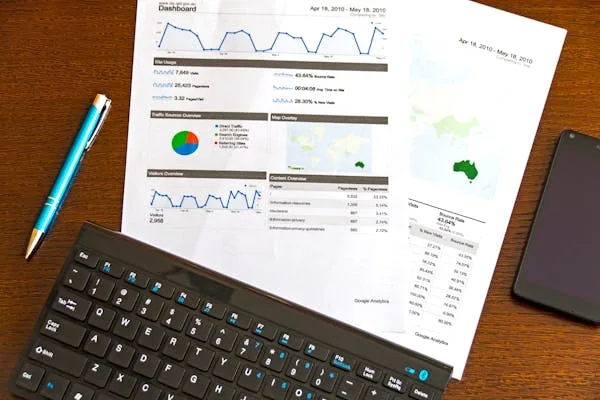
A fast, efficient process shows that you are serious, prepared, and ready to lead a high-velocity company.
Conclusion
Bigger funding amounts, faster deal cycles, and higher expectations now define the early-stage investment landscape. Founders are no longer just raising capital to build a prototype. They are raising to prove real traction, build teams, create scalable growth systems, and get ready for bigger, faster follow-on rounds.





